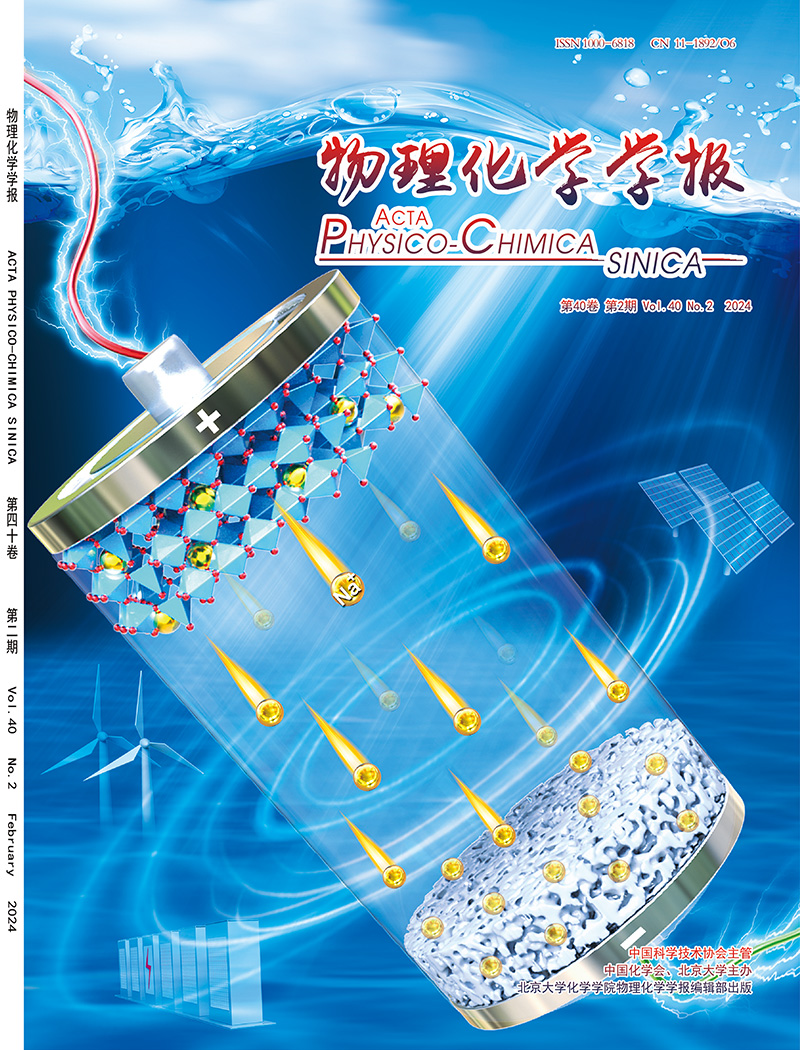Green H2O2 synthesis via melamine-foam supported S-scheme Cd0.5Zn0.5In2S4/S-doped carbon nitride heterojunction: Synergistic interfacial charge transfer and local photothermal effect
IF 13.5
2区 化学
Q1 CHEMISTRY, PHYSICAL
引用次数: 0
Abstract
Green photocatalytic synthesis of hydrogen peroxide (H2O2) represents a promising alternative to the energy-intensive anthraquinone process, yet it is hindered by rapid carrier recombination and insufficient redox capacity in sacrificial-agent-free systems. This work reports a melamine-foam (MF) supported sulfur (S)-doped carbon nitride (SCN)/S vacancy-modified Cd0.5Zn0.5In2S4 (CZIS) S-scheme heterojunction (CZIS/SCN/MF) via an in situ chemical bath-hydrothermal method for sacrificial-agent-free H2O2 photosynthesis. The S-scheme charge transfer mechanism was confirmed by in situ irradiated X-ray photoelectron spectroscopy, free-radical trapping electron paramagnetic resonance, femtosecond transient absorption spectra and theoretical calculations. Specifically, the sulfur doping could modulate the local charge distribution of the carbon nitride framework to reinforce the interfacial built-in electric field for the CZIS/SCN S-scheme heterojunction. Meanwhile, the calcination-induced S-vacancies in CZIS could serve as photoelectron traps, promoting charge separation, and reserving photoinduced holes for H2O oxidation, thereby achieving sacrificial-agent-free H2O2 synthesis. Coupled with the photothermal effect of MF's three-dimensional porous framework, the CZIS/SCN/MF catalyst with optimized S-doping density and SCN dosage delivers an H2O2 production rate of 3.46 mmol g−1 h−1 in pure water, surpassing most of the sacrificial-agent-free systems. This study proposes a novel strategy for synergistic interfacial charge regulation and energy conversion enhancement in sacrificial-agent-free photocatalytic systems.

三聚氰胺-泡沫支撑的s方案Cd0.5Zn0.5In2S4/ s掺杂氮化碳异质结合成绿色H2O2:协同界面电荷转移和局部光热效应
绿色光催化合成过氧化氢(H2O2)是替代能源密集型蒽醌工艺的一种很有前途的方法,但在无牺牲剂的体系中,载体重组速度快,氧化还原能力不足,阻碍了它的发展。本文报道了三聚氰胺泡沫(MF)负载的硫(S)掺杂氮化碳(SCN)/S空位修饰Cd0.5Zn0.5In2S4 (CZIS) S-scheme异质结(CZIS/SCN/MF),通过原位化学浴-水热法用于无牺牲剂H2O2光合作用。通过原位辐照x射线光电子能谱、自由基捕获电子顺磁共振、飞秒瞬态吸收光谱和理论计算证实了S-scheme电荷转移机理。具体来说,硫掺杂可以调节氮化碳骨架的局部电荷分布,增强CZIS/SCN S-scheme异质结的界面内置电场。同时,CZIS中煅烧诱导的s -空位可以作为光电子陷阱,促进电荷分离,并为H2O氧化保留光诱导空穴,从而实现无牺牲剂的H2O2合成。再加上MF三维多孔结构的光热效应,优化s掺杂密度和SCN用量的CZIS/SCN/MF催化剂在纯水中的H2O2产率为3.46 mmol g−1 h−1,超过了大多数无牺牲剂体系。本研究提出了一种在无牺牲剂光催化体系中协同界面电荷调节和能量转换增强的新策略。
本文章由计算机程序翻译,如有差异,请以英文原文为准。
求助全文
约1分钟内获得全文
求助全文

 求助内容:
求助内容: 应助结果提醒方式:
应助结果提醒方式:


